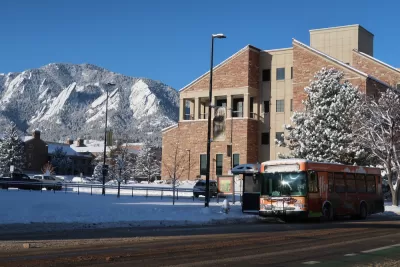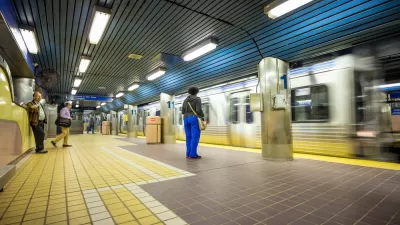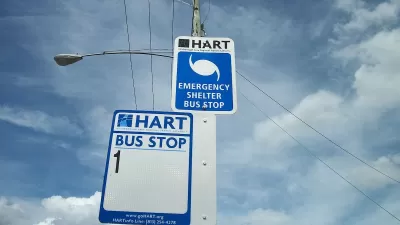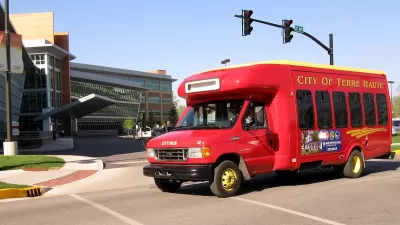Many local transit agencies that took advantage of a state program that funded free fares throughout August have seen increased ridership even beyond the program’s end.

Colorado’s month-long experiment with fare-free transit could have lasting impacts, writes Olivia Prentzel in the Colorado Sun, as many transit agencies around the state are seeing sustained ridership numbers after the program ended. The state offered $28 million in grants to agencies that made transit free in August as an effort to reduce air pollution at the time of year with the highest ozone emissions.
While ridership numbers dipped after the no-fare promotion ended, at least nine of the 14 public transit agencies that participated in the Zero Fare for Better Air program saw more riders in September compared with July, including the Regional Transportation District — which saw a 14% increase in its average weekday ridership from July to September, according to the agency’s final report on the program submitted to the state Wednesday.
As the article notes, “Drawing conclusions from the one-month pilot is challenging, as numbers can be influenced by the start of the school year and large scheduled events, like the Colorado Avalanche games during the NHL playoffs and the Stanley Cup championship parade.” The state is still weighing how to spend remaining funds and whether to renew the program next year.
FULL STORY: Public transit was free for many Coloradans in August. When fares returned, many riders stayed, data shows.

Alabama: Trump Terminates Settlements for Black Communities Harmed By Raw Sewage
Trump deemed the landmark civil rights agreement “illegal DEI and environmental justice policy.”

Study: Maui’s Plan to Convert Vacation Rentals to Long-Term Housing Could Cause Nearly $1 Billion Economic Loss
The plan would reduce visitor accommodation by 25% resulting in 1,900 jobs lost.

Planetizen Federal Action Tracker
A weekly monitor of how Trump’s orders and actions are impacting planners and planning in America.

Waymo Gets Permission to Map SF’s Market Street
If allowed to operate on the traffic-restricted street, Waymo’s autonomous taxis would have a leg up over ride-hailing competitors — and counter the city’s efforts to grow bike and pedestrian on the thoroughfare.

Parklet Symposium Highlights the Success of Shared Spaces
Parklets got a boost during the Covid-19 pandemic, when the concept was translated to outdoor dining programs that offered restaurants a lifeline during the shutdown.

Federal Homelessness Agency Places Entire Staff on Leave
The U.S. Interagency Council on Homelessness is the only federal agency dedicated to preventing and ending homelessness.
Urban Design for Planners 1: Software Tools
This six-course series explores essential urban design concepts using open source software and equips planners with the tools they need to participate fully in the urban design process.
Planning for Universal Design
Learn the tools for implementing Universal Design in planning regulations.
Caltrans
Smith Gee Studio
Institute for Housing and Urban Development Studies (IHS)
City of Grandview
Harvard GSD Executive Education
Toledo-Lucas County Plan Commissions
Salt Lake City
NYU Wagner Graduate School of Public Service





























